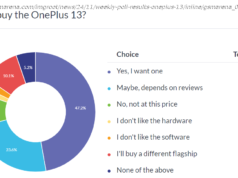Between the 5700 XT and 5700, which should you buy? AMD’s Navi cards are still impressive, but there are better options in 2021.
AMD’s 5700 and 5700 XT changed a lot. Although Nvidia still dominates the market, AMD’s Navi architecture made the company at least competitive (a position it hasn’t been in for years). Between them, though, which should you pick? There’s a lot going on with the 5700 and its XT variant, especially in 2021 as price and stock issues plague the GPU market. You may not be able to buy one, but AMD’s recent Big Navi cards provide a suitable replacement. For a look at how these cards measure up to the competition from Nvidia, check out our original RX 5700 XT and 5700 review, and our head-to-head comparison with the Nvidia RTX 2060 Super. The crux of this comparison was always going to be down to performance. The raw power of these two cards is their biggest differentiating factor, so the question is, should you spend extra money for the added capabilities of the 5700 XT? Let’s take a look at the specifications first to see what divides these two cards: The first major difference is the number of compute units. The 5700 XT has just over 10% more with 40, versus the 5700’s 36. That equates to the same difference in stream processors and should be a major component in the differentiating performance between these two cards. Another major difference is the clock speed. The base clock is 150MHz higher on the 5700 XT. Its “game clock” — the typical clock speed you can expect during sustained load — is 130MHz higher, which also aids the performance improvements over the 5700, though that gap can be closed with overclocking. The boost clock is much greater on the XT too, but unless you have strong cooling from a third-party card, it’s not a speed you’ll likely hit regularity. The 5700 XT has a sizeable uplift in TDP requirements, making it a greater candidate for aftermarket cooling. Some buyers with high-end aftermarket cooling and tweaking have managed to push their cards well north of 2GHz on a sustained basis. Finally, both cards have identical configurations of GDDR6 video memory and bandwidth. As for how this all affects real-world performance, we turn to our suite of benchmarks that we conducted during our initial review of the two cards.






